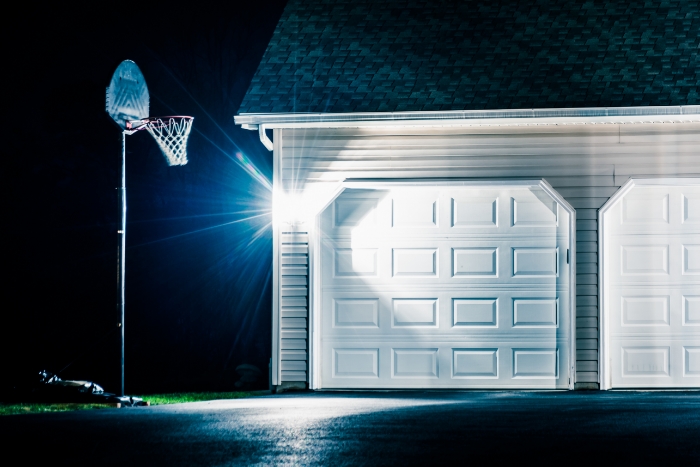In our landscape lighting world, one of the most important things that we have to be aware of is to fight glare — any light that can be seen and causes discomfort.
Imagine you’re driving along, listening to your favorite song, feeling really great! A driver in the opposite lane comes over a hill with high beams on. You’ve just gone from a great mood to becoming upset with that individual because of the bright lights shining in your eyes. Not only are you considering waving certain hand gestures, but your entire mood has also been spoiled.
Humans are always drawn toward the brightest source of light. Just like facing that driver coming over the hill, we will tend to look right at those bright lights coming toward us. It’s our nature, but glare often causes momentary blindness, which can be a great safety and security concern in a lighting system.
“When putting in fixtures where there are elevation changes, we must be very cautious in our installation practices.”
Here are some things to consider to remove glare and create a beautiful lighting system.
Ambient light on properties
One of the biggest glare sources that we need to be concerned about is ambient light around a prospective landscape lighting job.
I’m sure that you have all seen wall sconces with bare lamps blazing right into your eyes, or those jelly jar fixtures found on the side of most garages.
These ambient light sources can be a huge factor in how you design a job. We must be prepared to dim or shield many of these light sources. This can be done with a simple lamp change or by working with your electrical contractor to install a dimmer in the 120-volt fixture. If possible, lens changes on the outside of the fixture could help as well.
Hex louvers for fixtures
Back in the halogen days, hex louvers were essential for any projection-style light. The reason for this was that the multi-mirror reflector on these projection lamps could reduce a lot of side glare. Since the introduction of LED lamps, the need for hex louvers has fallen. That’s not to say we shouldn’t use them. Hex louvers can remove that side glare from your well light fixtures and certain in-ground up-lights.
Louvered brick lights
Louvered brick lights are often in harm’s way. What I mean by this is that they often get kicked. The lenses behind the louvers often get destroyed, causing the omni-directional lamp to be seen through the louvers. When these are serviced, the lenses should be looked at for any cracks and replaced if they are old and brittle. A translucent or milky white lens can be installed to really cut back on any glare. This will create a marker and tone down the light so the step can be seen while the lamps cannot.
Some manufacturers also offer a scrim. A scrim is a piece of cloth that will allow the light level to be diminished by about 20% to 40%. This will also cut down on any glare that the light source could produce. These are often used on flat surface-mounted louvered step lights. Since there is a directional light source panel behind the louvers, the light source can be very bright and cause momentary blindness. It’s very important that it is shielded in any way possible.
Elevation changes
When putting in fixtures where there are elevation changes, we must be very cautious in our installation practices — pathway lights along a driveway or a walkway, for instance. If there is an incline on these areas, we must select fixtures that are completely shielded, or we may need to change the lamp from an omni-directional to a directional source in the fixture. This will provide nice indirect and reflected light off the reflector on the path light itself.
When installing up-lights with a viewpoint from several stories up, it might be necessary to cross-light those items and deter the light from going completely straight up.
Downlighting
Downlighting can create an unbelievable natural lighting effect. As you pass light through tree branches and it appears on the ground, it can create a beautiful calm mood to suit anybody’s taste in lighting. However, if we can look up at these fixtures and see the light source, it may lead to glare. To combat this problem, we may need to use extra-long shrouds on downlighting fixtures. The inside of these shrouds should be dark so no reflective light is coming off of it from the inside.
For hanging fixtures, we may consider using frosted lenses and hex louvers when performing downlighting tasks. This can help cut down on any side glare and smooth the light to remove the sting of the directional light source.
These are just some things to think about. Glare can destroy your great design. Become proficient in all the tools necessary to eliminate glare on your projects.
Kevin Smith is the national technical support and trainer at Brilliance LED, Carefree, Arizona, and can be reached via email.





